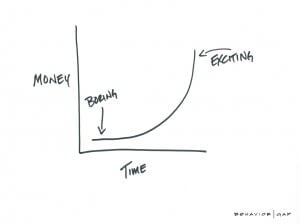
UNDERSTANDING FIXED ANNUITIES
Investment ManagementMar 03, 2023
Rising rates have presented opportunities at the lower end of the risk scale for the first time in over a decade. Many banks and even brokerage firms are advertising their best CD rates. There has also been a renewed interest in some annuity products, particularly Fixed Annuities. Fixed annuities are very similar to CD’s. Simply put, you agree with an insurance company to leave your money there for a specified term in return for a fixed annual rate. The return and safety of your money are guaranteed by the insurance company.
Terms range anywhere from 3 years all the way up to 10 years or more. The average timeframe is 5 to 7 years. Some offer a fixed rate for the life of the contract. Others offer a higher rate for a period and then a new rate to be assigned each year for the remainder of the contract. The interest earned is tax deferred, which can be an attractive benefit for your non-IRA money. Tax deferred is not tax free. Tax deferred means that the interest accumulates in the contract, and you pay taxes on it when you withdraw from the contract. If you are under 59 ½ when you withdraw from a Fixed Annuity, you pay a 10% penalty in addition to the taxes on your interest. The principal is not subject to taxes.
Like all investments, there are some drawbacks to look out for with Fixed Annuities. The major issue with Fixed Annuities is surrender charges. The penalties for closing the contract can be very high. On top of surrender charges, there can be a market value adjustment (MVA), which can potentially make the surrender charges significantly higher. There are some exceptions to avoid surrender charges, but they aren’t really situations you want to be in. They include death, going into a nursing home or having a terminal illness. Most annuities also allow you to withdraw the interest without penalty and many allow you to withdraw up to 10% of the contract value without penalty each year.
The other thing to look out for with Fixed Annuities is a high initial rate. We often refer to the upfront rate as a “teaser” rate. It sounds very attractive and makes you comfortable with the investment. However, if you get a high rate for a year and commit your money for 7 years, you better understand how the interest rate will be determined in the subsequent years and what the minimum rate is. The best way to evaluate it is to assume you get the minimum for the remaining years and then decide if the average annual return would be acceptable to you.
A Fixed Annuity may be appropriate for someone who is very conservative and does not have the risk tolerance for stocks and bonds. They can be an attractive alternative to CD’s for people who have money they can tie up for an extended time period and can benefit from the tax deferral. The most important thing is to understand all the details before committing your money to the insurance company. Our final thought with Fixed Annuities and all annuities is that if it sounds too good to be true, it probably is.


